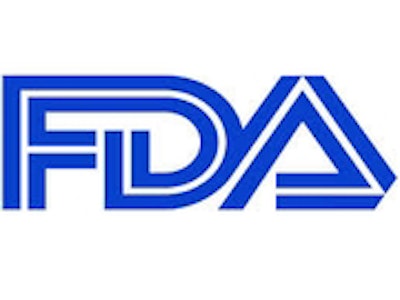
The FDA Food Safety Modernization Act (FSMA) rule on Sanitary Transportation of Human and Animal Food is now final, advancing FDA’s efforts to protect foods from farm to table by keeping them safe from contamination during transportation. The earliest compliance dates for some firms begin one year after publication of the final rule in the Federal Register.
This rule is one of seven foundational rules proposed since January 2013 to create a modern, risk-based framework for food safety. The goal of this rule is to prevent practices during transportation that create food safety risks, such as failure to properly refrigerate food, inadequate cleaning of vehicles between loads, and failure to properly protect food.
The rule builds on safeguards envisioned in the 2005 Sanitary Food Transportation Act (SFTA). Because of illness outbreaks resulting from human and animal food contaminated during transportation, and incidents and reports of unsanitary transportation practices, there have long been concerns about the need for regulations to ensure that foods are being transported in a safe manner.
The rule establishes requirements for shippers, loaders, carriers by motor or rail vehicle, and receivers involved in transporting human and animal food to use sanitary practices to ensure the safety of that food. The requirements do not apply to transportation by ship or air because of limitations in the law.
Specifically, the FSMA rule establishes requirements for vehicles and transportation equipment, transportation operations, records, training and waivers.
Who Is Covered?
- With some exceptions, the final rule applies to shippers, receivers, loaders and carriers who transport food in the United States by motor or rail vehicle, whether or not the food is offered for or enters interstate commerce. It also applies to:
o persons, e.g., shippers, in other countries who ship food to the United States directly by motor or rail vehicle (from Canada or Mexico), or by ship or air, and arrange for the transfer of the intact container onto a motor or rail vehicle for transportation within the U.S., if that food will be consumed or distributed in the United States.
- The rule does not apply to exporters who ship food through the United States (for example, from Canada to Mexico) by motor or rail vehicle if the food does not enter U.S. distribution.
- Companies involved in the transportation of food intended for export are covered by the rule until the shipment reaches a port or U.S. border.
Key Requirements
Specifically, the rule would establish requirements for:
- Vehicles and transportation equipment: The design and maintenance of vehicles and transportation equipment to ensure that it does not cause the food that it transports to become unsafe. For example, they must be suitable and adequately cleanable for their intended use and capable of maintaining temperatures necessary for the safe transport of food.
- Transportation operations: The measures taken during transportation to ensure food safety, such as adequate temperature controls, preventing contamination of ready to eat food from touching raw food, protection of food from contamination by non-food items in the same load or previous load, and protection of food from cross-contact, i.e., the unintentional incorporation of a food allergen.
- Training: Training of carrier personnel in sanitary transportation practices and documentation of the training. This training is required when the carrier and shipper agree that the carrier is responsible for sanitary conditions during transport.
- Records: Maintenance of records of written procedures, agreements and training (required of carriers). The required retention time for these records depends upon the type of record and when the covered activity occurred, but does not exceed 12 months.
Waivers
The Sanitary Food Transportation Act allows the agency to waive the requirements of this FSMA rule if it determines that the waiver will not result in the transportation of food under conditions that would be unsafe for human or animal health.
The FDA announced in the proposed rule that it intended to publish waivers for two groups of people/businesses (see below). The agency intends to publish these waivers in the Federal Register prior to the date firms are required to comply with this rule.
The FDA also received comments asking for a waiver for transportation operations for molluscan shellfish for entities that hold valid state permits under the National Shellfish Sanitation Program. The agency continues to review comments on this request, and will issue a determination in the near future.
The agency intends to publish waivers for:
- Shippers, carriers and receivers who hold valid permits and are inspected under the National Conference on Interstate Milk Shipments (NCIMS) Grade “A” Milk Safety program. This waiver only applies when Grade A milk and milk products—those produced under certain sanitary conditions—are being transported. FDA acknowledges that controls for such transportation operations already exist under the NCIMS program, with state enforcement and FDA oversight.
- Food establishments holding valid permits issued by a relevant regulatory authority, such as a state or tribal agency, when engaged as receivers, shippers and carriers in operations in which food is relinquished to customers after being transported from the establishment. Examples of such establishments include restaurants, supermarkets, and home grocery delivery operations. FDA acknowledges that controls for such transportation operations already exist under the Retail Food Program, with state, territorial, tribal and local enforcement and FDA oversight.
Compliance Dates
Recognizing that businesses, especially small businesses may need more time to comply with the requirements, the compliance dates are adjusted accordingly.
- Small Businesses - businesses other than motor carriers who are not also shippers and/or receivers employing fewer than 500 persons and motor carriers having less than $27.5 million in annual receipts would have to comply two years after the publication of the final rule.
- Other Businesses - a business that is not small and is not otherwise excluded from coverage would have to comply one year after the publication of the final rule.
Assistance To Industry
- The FDA FSMA Food Safety Technical Assistance Network is already operational to provide a central source of information to support industry understanding and implementation of FSMA. Questions submitted online or by mail will be answered by information specialists or subject matter experts.
- The FDA plans to develop an online course that would meet the training requirements for this rule. The agency anticipates this course will be available before the first compliance dates go into effect.
- The agency will also issue guidance to assist industry in complying with the final rule.
Changes From The Proposed Rule
The proposed rule opened for public comment on Feb. 5, 2014. The FDA made changes throughout the rule in response to public comments, as it has for the other FSMA rules that have become final in the last seven months. For additional information on key changes that have been made in the final rule, please see “Key Changes in the FSMA Final Rule on Sanitary Transportation of Human and Animal Food.”
Exempt From The Rule
- Shippers, receivers, or carriers engaged in food transportation operations that have less than $500,000 in average annual revenue
- Transportation activities performed by a farm
- Transportation of food that is transshipped through the United States to another country
- Transportation of food that is imported for future export and that is neither consumed or distributed in the United States
- Transportation of compressed food gases (e.g. carbon dioxide, nitrogen or oxygen authorized for use in food and beverage products), and food contact substances
- Transportation of human food byproducts transported for use as animal food without further processing
- Transportation of food that is completely enclosed by a container except a food that requires temperature control for safety
- Transportation of live food animals, except molluscan shellfish

















